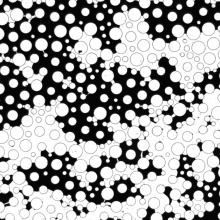New publication (University of Stuttgart), published in Advances in Water Resources. The work has been developed within the SFB 1313 research project Z02.
"Experimental evaluation of fluid connectivity in two-phase flow in porous media"
Authors
- Samaneh Vahid Dastjerdi (University of Stuttgart)
- Nikolaos Karadimitriou (University of Stuttgart, SFB 1313 research project Z02)
- S. Majid Hassanizadeh (University of Stuttgart, SFB 1313 external partner, research projects A01and A02)
- Holger Steeb (University of Stuttgart, SFB 1313 research projects B05, C05, Z02)
Abstract
In this work, we provide a physically-consistent modeling approach for two-phase porous media flow, by including percolating interfacial area and saturation as state variables. For this purpose, two continuum theories for two-phase flow which have been individually proven to be conditionally valid, are combined. The potential use of the connected-to-the-flow interfacial area as a state variable is tested by means of time-resolved microfluidic experiments, for various flux boundary conditions. Moreover, a linear relation between the percolating saturation and interfacial area is observed and studied, which is persistent for the tested boundary conditions. In our microfluidic experiments, we employ optical microscopy to perform cyclic immiscible displacement experiments. Our results show that a continuum model, where capillary pressure , saturation , and specific interfacial area of the clusters connected to the flow are considered, is closer to a universal description of two-phase flow than the common approaches, where the only state variable is saturation.


